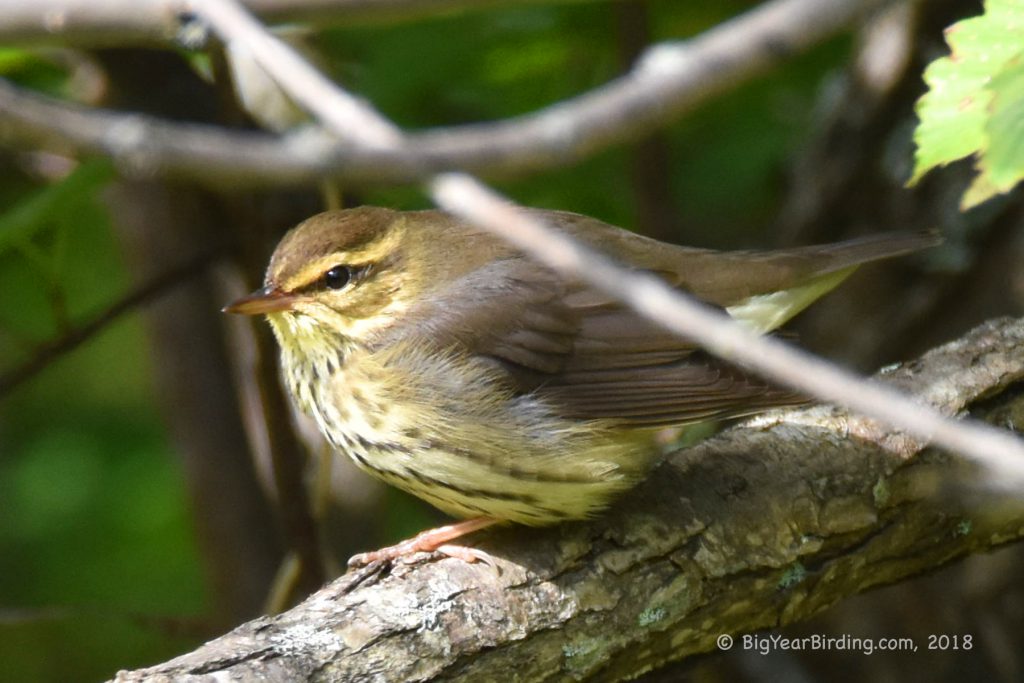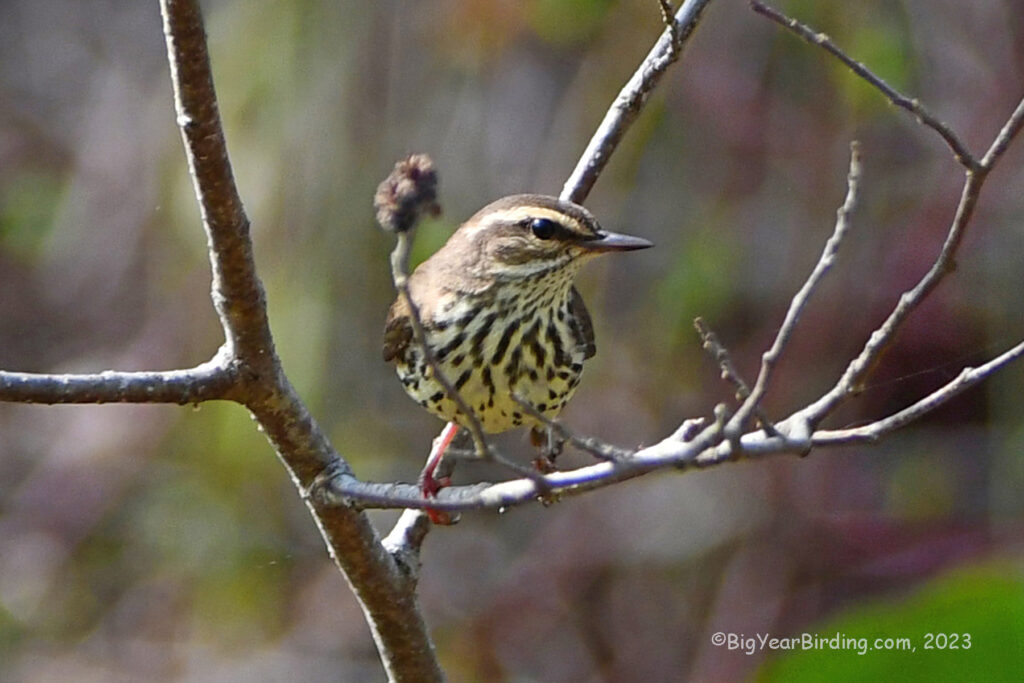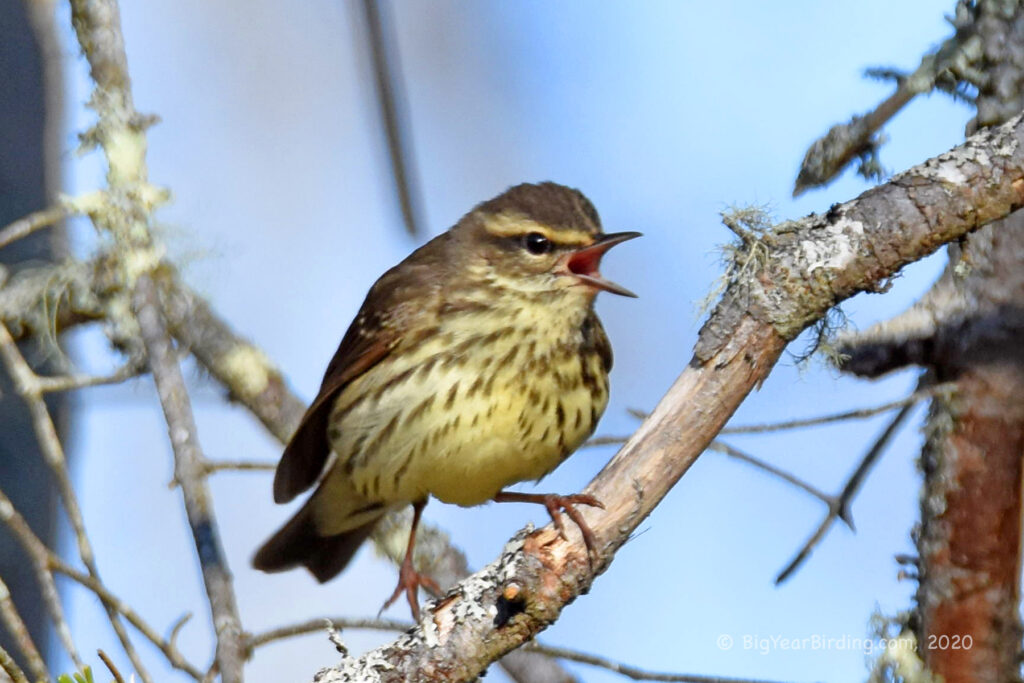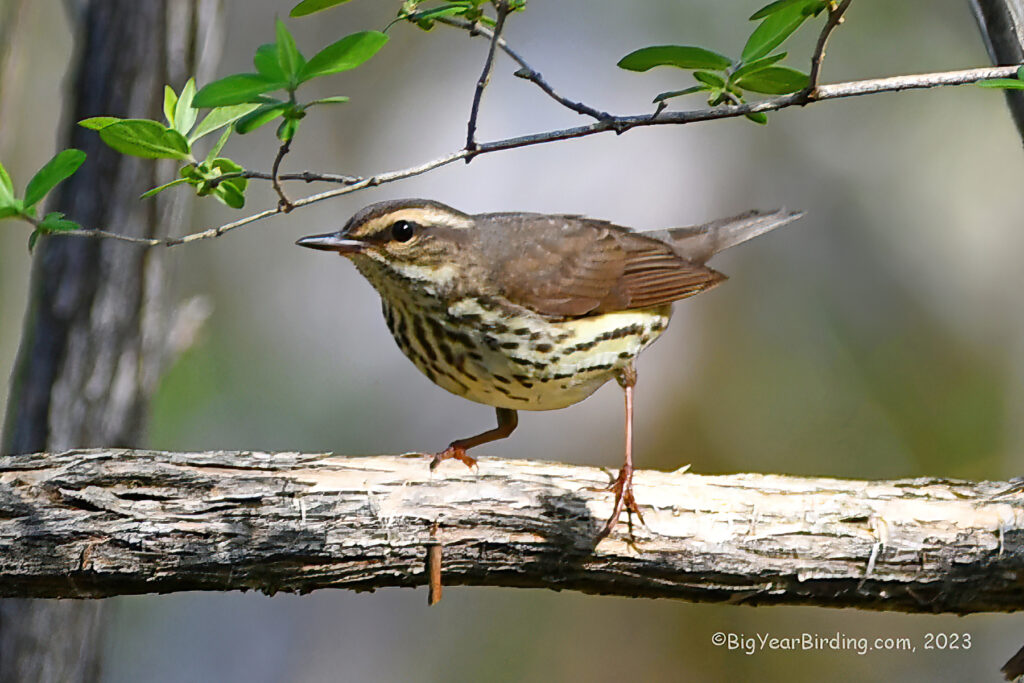
The Northern Waterthrush (Parkesia noveboracensis) is a migratory bird that belongs to the New World Warbler family. They are typically 5.5 to 6.3 inches long, with a wingspan of about 8.7 inches. They weigh around 0.4 to 0.5 ounces. They are relatively large for a warbler, with a plump body, rounded head, and a long, heavy bill.

The Northern Waterthrush has a distinctive appearance, with a buffy-white eyebrow stripe and a bold, buffy-white supercilium. They have a dark olive-brown back and wings, with white underparts heavily streaked with black. Their legs are long and pinkish, and their eyes are dark. In flight, the Northern Waterthrush shows a conspicuous white stripe on the dark wings.
The Northern Waterthrush breeds in the boreal forests of Canada and Alaska, and winters in Central and South America. During migration, they can be found in a variety of habitats, including freshwater marshes, swamps, and wooded streams. They migrate primarily at night, using stars to navigate. They are typically the first warbler species to arrive in their breeding grounds in the spring, and the last to leave in the fall.
The Northern Waterthrush feeds on insects, spiders, and other invertebrates. They forage on the ground, flipping over leaves and other debris to uncover prey. They also wade in shallow water to catch aquatic invertebrates. During migration, they may occasionally feed on fruit and nectar.

The Northern Waterthrush is a skulking bird that is often difficult to see, but its distinctive song can often be heard in its breeding and wintering habitats. Its song is a loud, ringing series of musical notes that descends in pitch. Overall, the Northern Waterthrush is a fascinating migratory bird that can be a challenging but rewarding species to observe and study.

